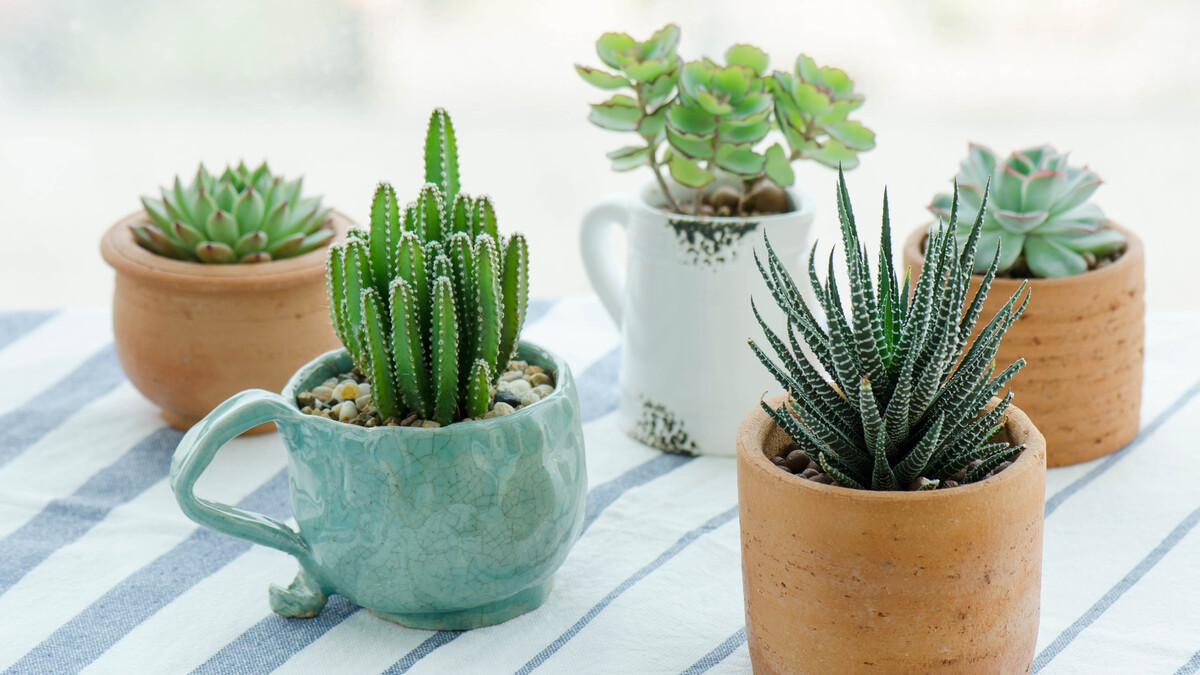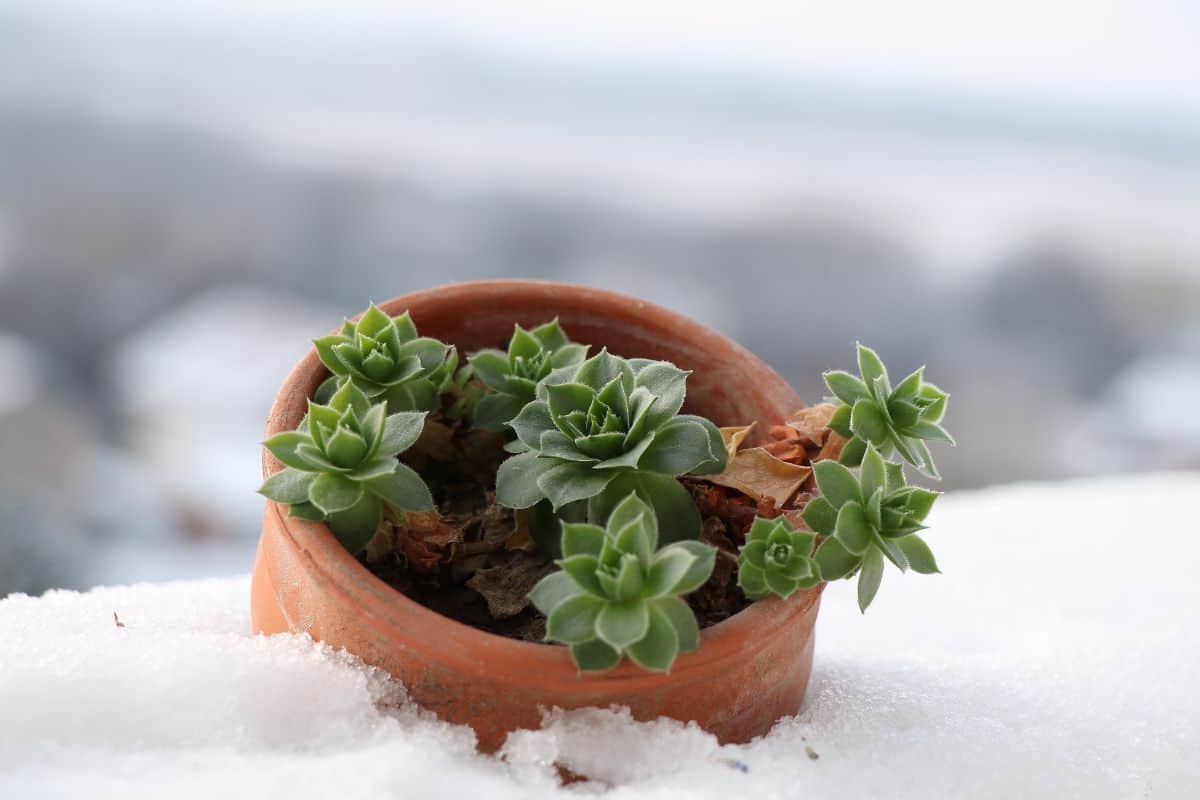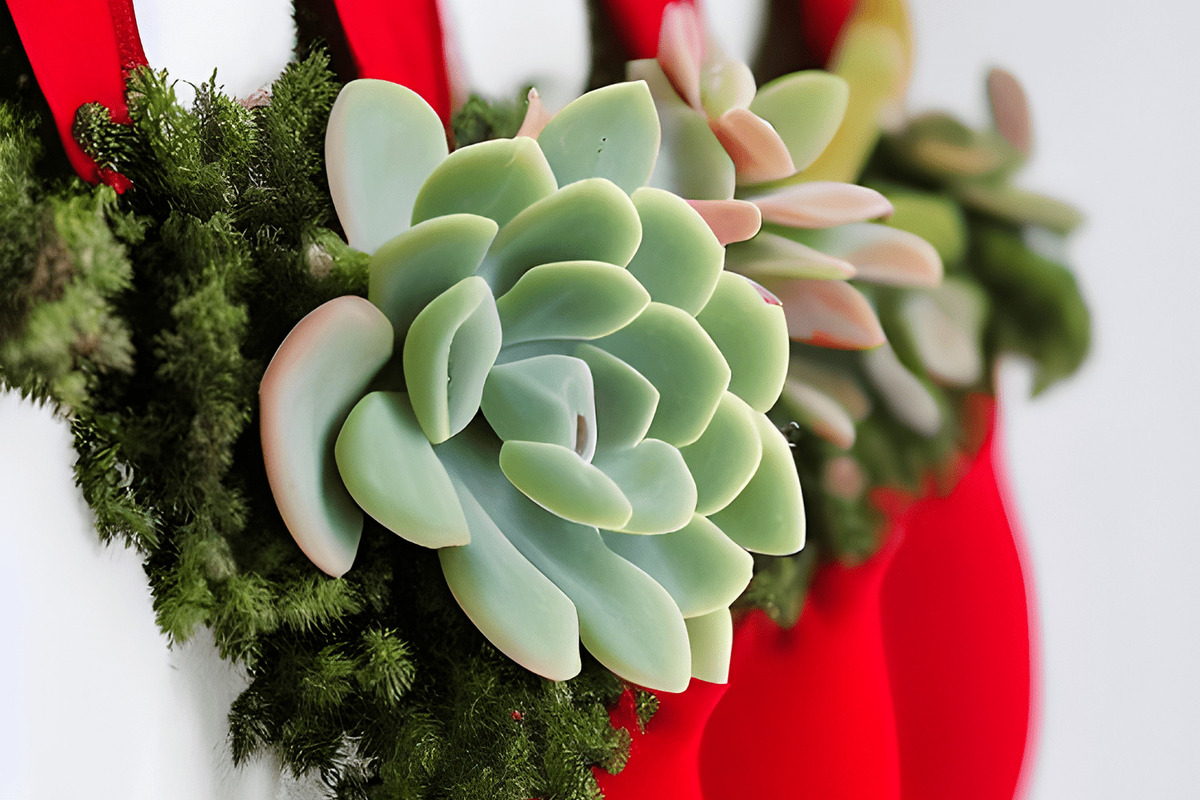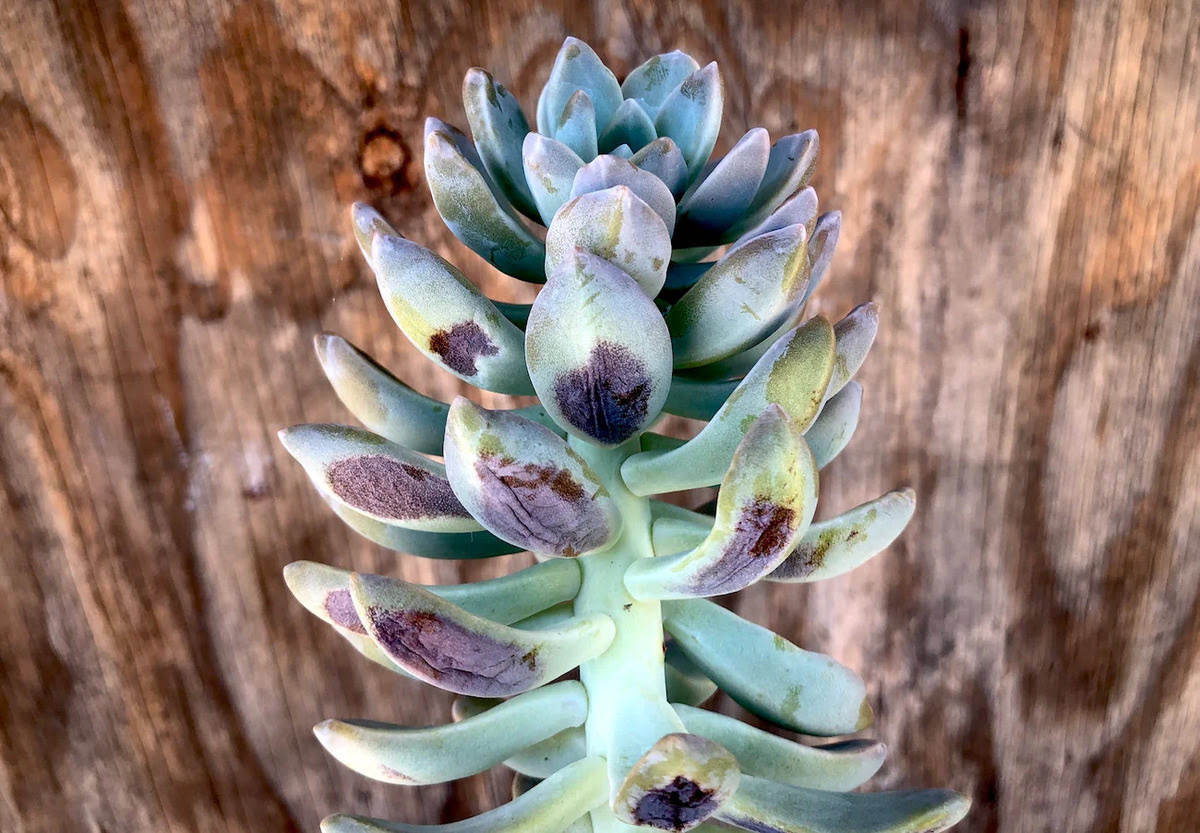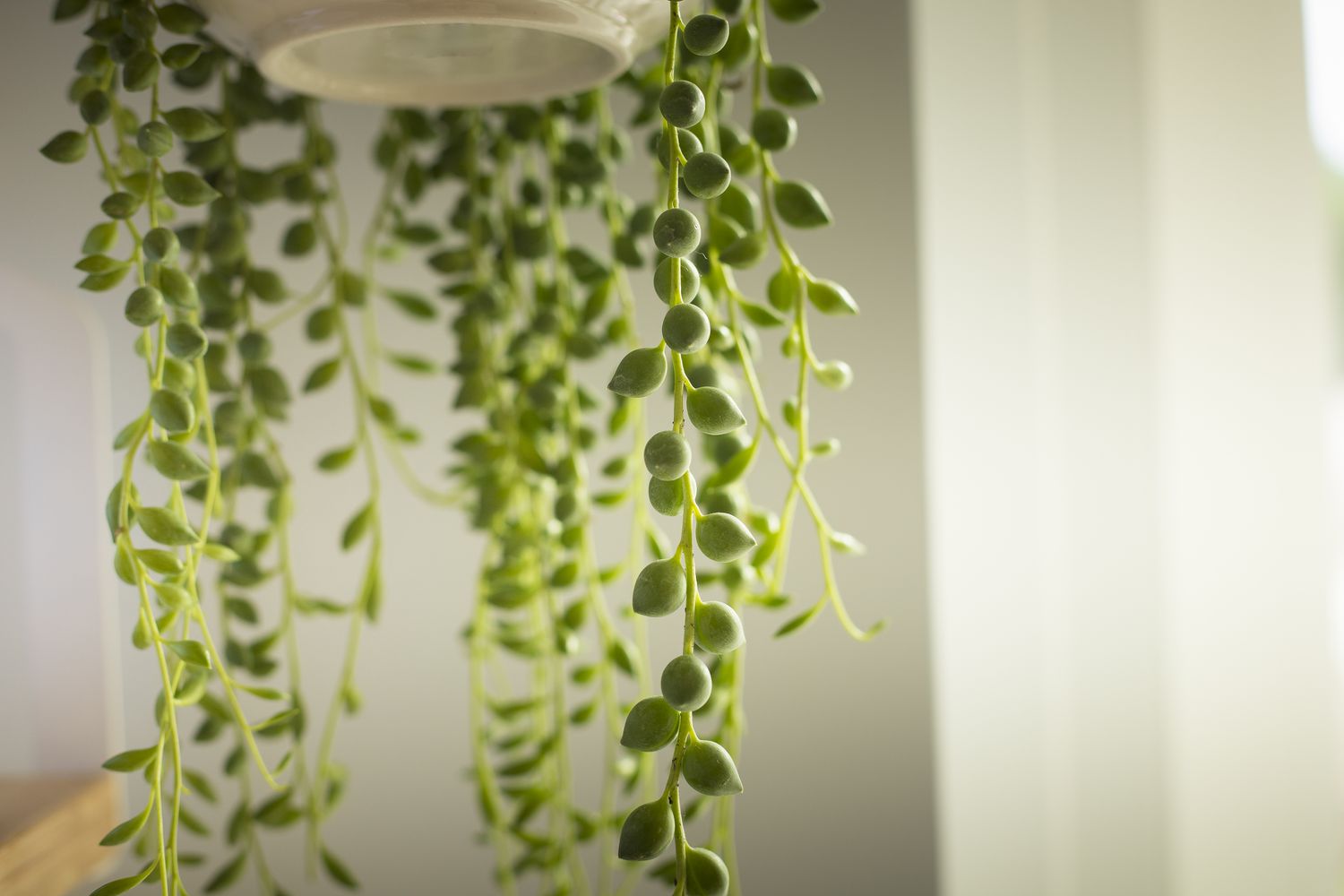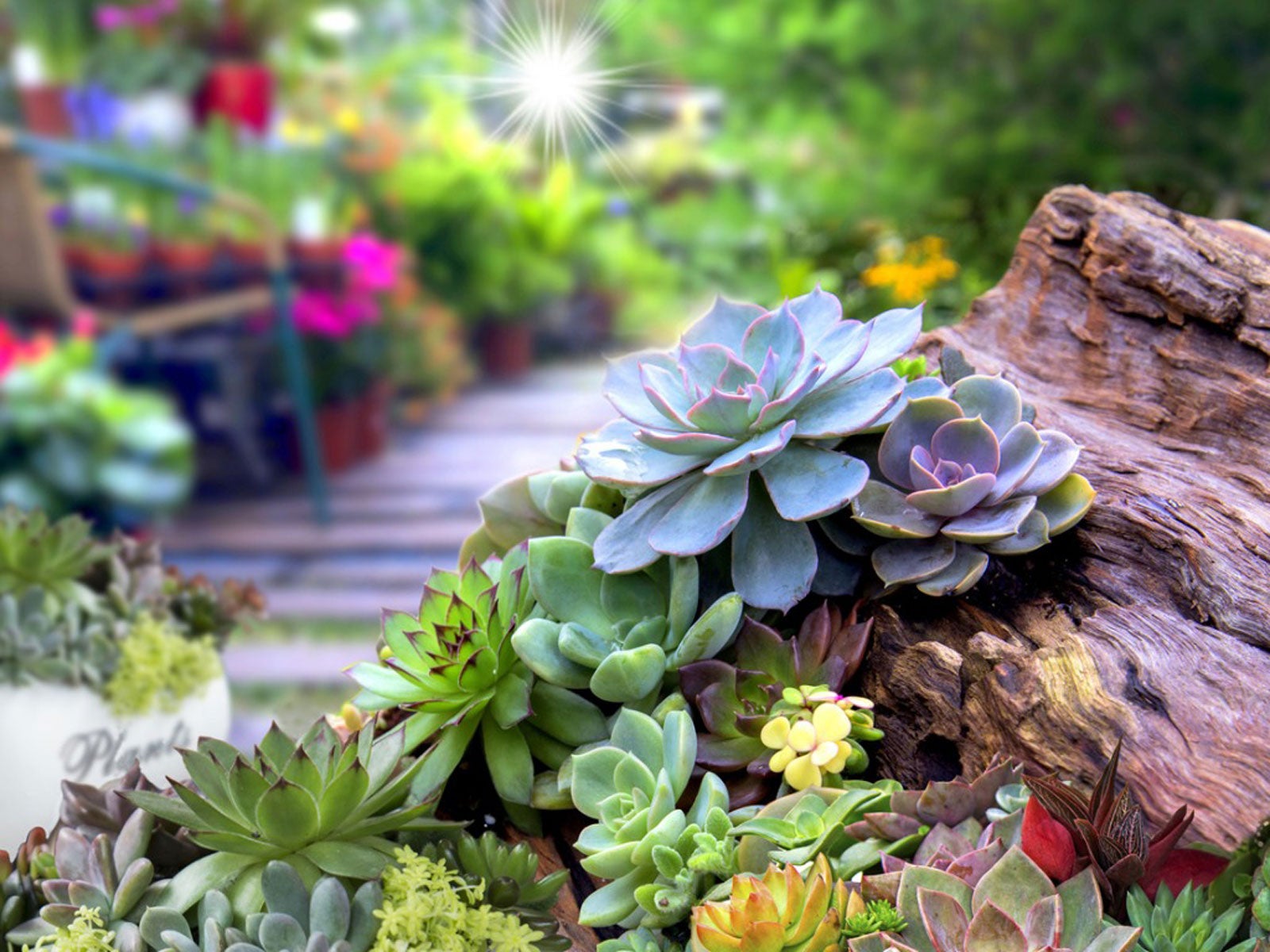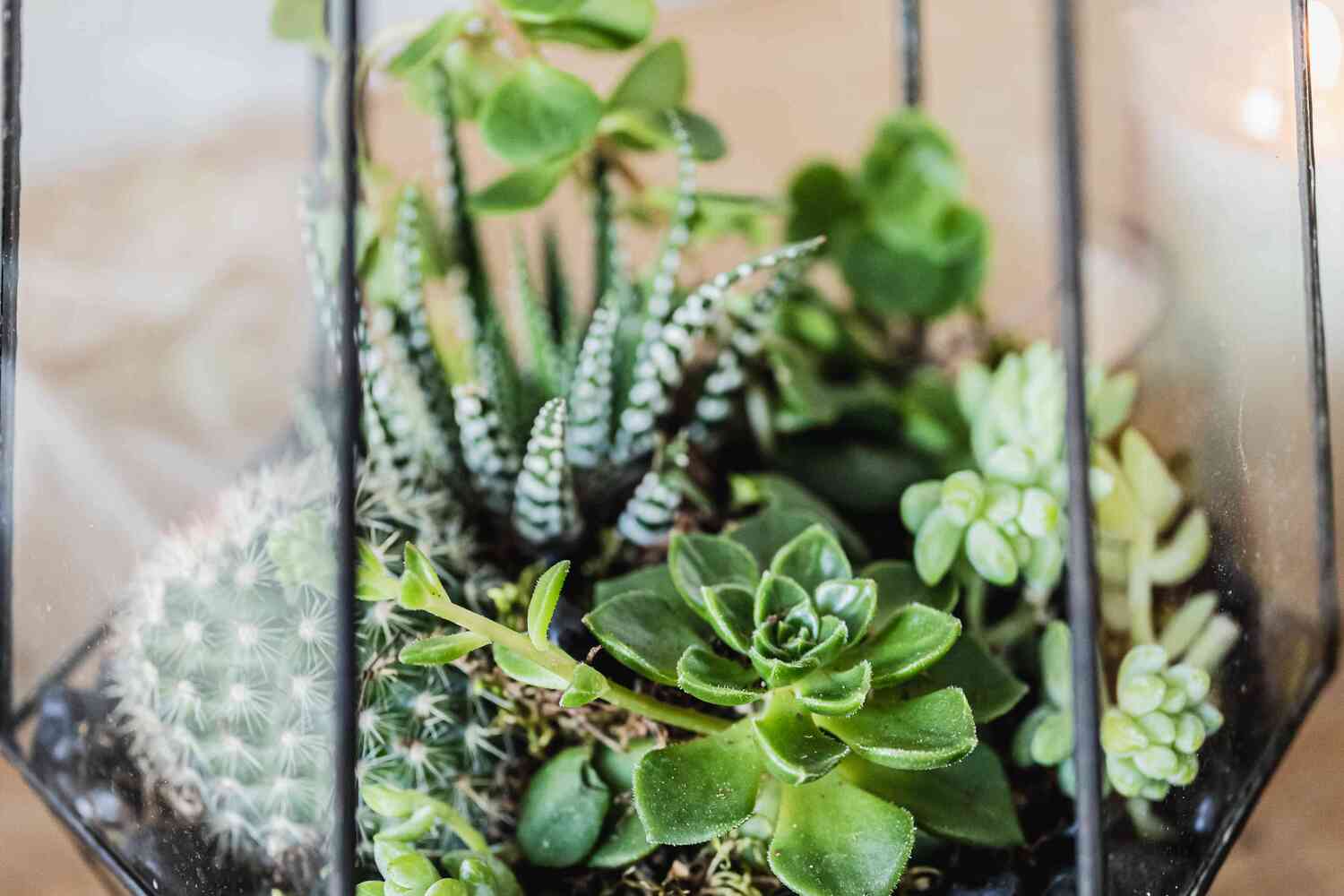Home>Types of Gardening>Ornamental Gardening>How To Reproduce Succulents
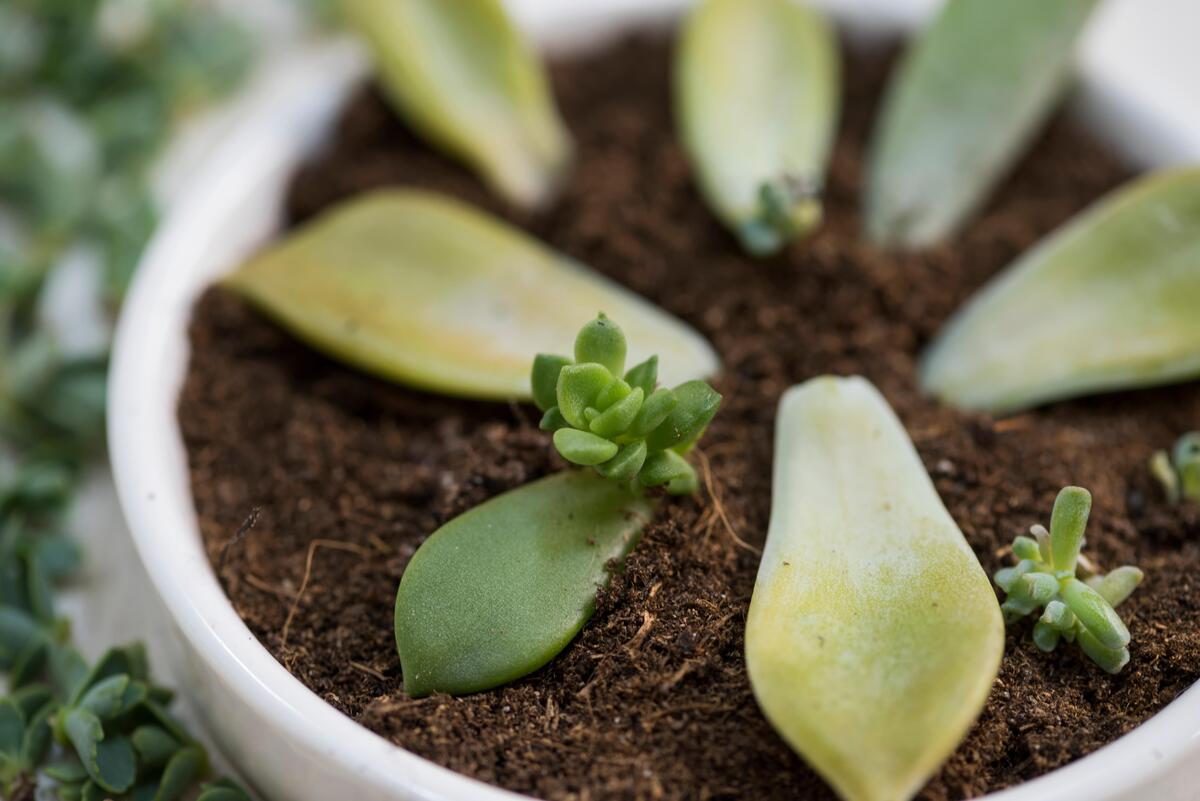

Ornamental Gardening
How To Reproduce Succulents
Modified: February 9, 2024
Learn how to reproduce succulents through simple methods in ornamental gardening. Discover expert tips and techniques for growing beautiful succulent plants.
(Many of the links in this article redirect to a specific reviewed product. Your purchase of these products through affiliate links helps to generate commission for Chicagolandgardening.com, at no extra cost. Learn more)
Table of Contents
- Introduction
- Choosing the Right Succulent
- Propagation Methods
- Method 1: Leaf Propagation
- Method 2: Stem Cutting
- Method 3: Offsetting
- Method 4: Division
- Requirements for Successful Reproduction
- Providing Adequate Light
- Proper Watering Techniques
- Selecting the Right Soil
- Avoiding Common Mistakes
- Recognizing and Addressing Common Issues
- Conclusion
Introduction
Welcome to the world of succulent gardening! If you’re looking to expand your collection or simply multiply your favorite succulents, learning how to reproduce them is an essential skill. Reproduction allows you to create new plants from existing ones, giving you the opportunity to propagate and share the beauty of these unique plants.
Succulents are known for their ability to store water in their leaves, stems, and roots, making them resilient and low-maintenance plants. With their vibrant colors and fascinating shapes, succulents have gained popularity among gardening enthusiasts and interior decorators alike. Whether you have a single succulent or a diverse collection, being able to reproduce them will not only add to your garden but also give you a sense of accomplishment.
In this article, we will explore different methods of succulent reproduction and provide you with practical tips for success. From leaf propagation to stem cuttings, offsetting, and division, each method offers unique advantages and requires specific techniques. Additionally, we will discuss the conditions and care requirements necessary for successful reproduction, including proper lighting, watering, and soil selection.
Reproducing succulents can be a rewarding and fulfilling experience. It allows you to witness the growth and development of new plants, creating a connection to nature and the cycle of life. Whether you’re a beginner or an experienced gardener, this guide aims to equip you with the knowledge and techniques needed to propagate succulents effectively.
So let’s dive in and discover the fascinating world of succulent reproduction!
Choosing the Right Succulent
Before diving into the various methods of succulent reproduction, it’s important to start with the right plant. Choosing the right succulent is crucial to ensure a successful propagation process. Here are a few key factors to consider when selecting a succulent for reproduction:
- Health: Choose a healthy succulent with no signs of disease or pests. Look for plants with vibrant colors, firm leaves, and sturdy stems. A healthy plant will have a better chance of producing healthy offspring.
- Maturity: Opt for a mature succulent that has reached its full size. Young plants may not have developed enough energy reserves to support leaf or stem cutting propagation methods.
- Compatibility: Consider the compatibility of the succulent with the local climate and growing conditions. Certain succulents may thrive better in specific environments, so choose plants that are well-suited to your region.
- Variety: Explore the wide variety of succulents available. Each species and cultivar has its own unique characteristics, from rosette shapes to trailing vines. Select a succulent that matches your aesthetic preferences and fits well with your existing collection.
Furthermore, it’s worth noting that some succulents are easier to propagate than others. Certain species, such as Echeveria, Sedum, and Crassula, tend to have higher success rates in reproduction. These plants often produce “pups” or offsets, making the process simpler for beginners.
Remember, when choosing a succulent for reproduction, it’s essential to keep in mind the overall health and compatibility of the plant. By starting with a strong and suitable succulent, you are setting the foundation for a successful propagation journey.
Propagation Methods
There are several methods of propagating succulents, each with its own unique requirements and benefits. Let’s explore the most common propagation methods:
- Leaf Propagation: This method involves removing a healthy leaf from the parent plant and allowing it to develop roots and grow into a new plant. Leaf propagation is commonly used for succulents with thick, fleshy leaves, such as Echeveria and Sedum. Simply gently twist or cut a leaf from the stem and let it dry and callous for a few days before placing it on well-draining soil.
- Stem Cutting: Stem cuttings involve taking a portion of the parent plant stem and allowing it to develop roots and grow into a new plant. This method works well for succulents with long stems, such as Crassula and Aeonium. Use a clean, sharp knife or scissors to carefully cut a piece of stem, and let it dry and callous before planting it in well-draining soil.
- Offsetting: Many succulents produce small offshoots, known as offsets or pups, near the base of the parent plant. Offsetting is a natural way for succulents to reproduce. These offsets can be gently separated from the parent plant and planted individually. This method is commonly used for succulents like Sempervivum and Agave.
- Division: Division involves separating a clump or cluster of succulents into multiple plants. This method is suitable for succulents that grow in clusters or have a restricted root system, such as Aloe and Haworthia. Carefully remove the plant from its container and gently separate the individual plants, ensuring each has its own roots.
Each propagation method has its own specific requirements and success rate. Experimenting with different methods can help you find the most effective approach for each succulent variety. Keep in mind that not all succulents may be suitable for every propagation method, so it’s important to research and understand the specific needs of each plant.
Now that you’re familiar with the various propagation methods, you can start exploring and experimenting with each technique to expand your succulent collection and share the beauty of these plants with others.
Method 1: Leaf Propagation
Leaf propagation is a popular and fascinating method of propagating succulents. It involves removing a healthy leaf from the parent plant and allowing it to develop roots and eventually grow into a new plant. This method is commonly used for succulents with thick, fleshy leaves, such as Echeveria and Sedum.
To propagate succulents through leaf propagation, follow these steps:
- Select a Healthy Leaf: Choose a plump and healthy leaf from the parent plant. Look for leaves that are fully developed and free from signs of damage or disease.
- Gently Remove the Leaf: Gently twist or cut the leaf from the stem of the succulent. Be careful not to damage the leaf or the stem during the process.
- Dry and Callous the Leaf: Place the leaf in a dry location away from direct sunlight and allow it to dry and callous for a few days. This helps prevent rot when the leaf is planted.
- Plant the Leaf: Once the leaf has calloused, plant it on well-draining soil. You can use a specialized succulent or cactus mix or create your own by combining regular potting soil with perlite or coarse sand.
- Provide Adequate Moisture: Mist the soil lightly to provide moisture without saturating it. It’s important to avoid overwatering, as succulents prefer dry conditions.
- Place in Indirect Sunlight: Find a bright location with indirect sunlight for your leaf propagated succulent. Avoid placing it in direct sunlight, as this can scorch the delicate leaves.
- Wait for Roots and New Growth: Over time, the leaf will develop roots and new growth. Be patient and allow the plant to establish itself before transplanting it into a larger pot or garden bed.
Leaf propagation is a rewarding and visually pleasing method of propagating succulents. It allows you to witness the development and growth of new plants from a single leaf. Remember to provide the right conditions and have patience as the leaf takes root and starts to grow. With proper care, you’ll be able to celebrate the success of your leaf propagated succulents!
Method 2: Stem Cutting
Stem cutting is a popular method of propagating succulents, especially those with long stems, such as Crassula and Aeonium. This propagation technique involves taking a portion of the parent plant’s stem and allowing it to develop roots and grow into a new plant.
Here’s a step-by-step guide on how to propagate succulents using stem cuttings:
- Select a Healthy Stem: Choose a healthy stem from the parent plant. Ensure that it is free from any signs of damage or disease.
- Cut the Stem: Use a clean, sharp knife or scissors to carefully cut a portion of the stem. Make sure the cutting is at least a couple of inches long and has several leaves attached.
- Dry and Callous the Cutting: Allow the stem cutting to dry and callous for a few days in a dry and shaded area. This step helps prevent rotting when the cutting is planted.
- Prepare the Soil: Use well-draining soil for planting the stem cutting. You can either use a specialized succulent or cactus mix or create your own by combining potting soil with perlite or coarse sand.
- Insert the Cutting: Create a small hole in the soil and gently insert the bottom end of the cutting into the soil. Be careful not to damage any leaves or buds during the process.
- Provide Appropriate Moisture: Water the soil lightly, ensuring that it is evenly moist but not waterlogged. Succulents prefer drier conditions, so it’s important not to overwater them.
- Place in a Bright Location: Find a bright spot with indirect sunlight for the newly planted stem cutting. Avoid exposing it directly to harsh sunlight, as it can cause the cutting to wilt or get sunburned.
- Monitor and Wait for Roots: Regularly check the soil moisture and monitor the progress of the stem cutting. Over time, it will develop roots and start to grow new leaves.
Stem cutting propagation allows you to create multiple plants from a single parent succulent. It’s a rewarding process that lets you witness the growth and development of new succulents. Remember to provide the right conditions, such as well-draining soil and appropriate lighting, and be patient as the stem cutting establishes itself. With proper care, you’ll soon have a thriving collection of succulents propagated from stem cuttings!
Method 3: Offsetting
Offsetting is a natural propagation method that many succulents use to reproduce. Succulents such as Sempervivum and Agave commonly produce small offshoots, called offsets or pups, near the base of the parent plant. These offsets can be gently separated and planted individually to grow into new plants.
Here’s a step-by-step guide on how to propagate succulents using the offsetting method:
- Identify the Offsets: Inspect the base of the parent plant and look for small offsets emerging from the soil. These offsets often develop their own root systems, making them suitable for propagation.
- Gently Remove the Offset: Carefully detach the offset from the parent plant by gently wiggling it back and forth. Use your fingers or a clean, sharp knife if necessary. Take care not to damage the roots or stem of the offset.
- Dry and Callous: Place the detached offset in a shaded area and allow it to dry and callous for a few days. This step helps prevent rotting when it is planted.
- Prepare the Soil: Use well-draining soil for planting the offset. A mixture of succulent or cactus potting mix with perlite or coarse sand works well.
- Plant the Offset: Make a small hole in the soil and gently place the offset into it, ensuring that the roots are buried and the offset is secure. Add more soil around the base if needed.
- Provide Adequate Moisture: Water the soil lightly, enough to moisten it but avoid overwatering. Ensure that the soil is allowed to dry between waterings to prevent root rot.
- Place in a Suitable Location: Find a spot with bright, indirect sunlight for the newly planted offset. Gradually introduce it to more sunlight over time to prevent sunburn.
- Monitor and Nurture: Keep an eye on the offset and provide proper care, including regular watering and suitable lighting conditions. With time, it will establish roots and grow into a new succulent.
Offsetting is a relatively simple and rewarding method of propagating succulents. It allows you to create new plants that are genetically identical to the parent plant. By expanding your succulent collection through offset propagation, you can enjoy a variety of beautiful and healthy succulents in your garden or home.
Method 4: Division
Division is a propagation method that involves separating a clump or cluster of succulents into multiple plants. This technique is suitable for succulents that grow in clusters or have a compact root system, such as Aloe and Haworthia. By dividing these plants, you can create new individual succulents that can thrive independently.
Here’s a step-by-step guide on how to propagate succulents using the division method:
- Select a Mature Plant: Choose a mature succulent with a well-established root system. Mature plants are more likely to tolerate the division process and recover quickly.
- Prepare the Plant: Carefully remove the succulent from its container or ground using a gentle twisting motion. Gently shake off excess soil, exposing the roots and separating any offsets or clumps.
- Separate the Clumps: Examine the clump and look for natural divisions or a clear separation point. Use your hands or a clean, sharp knife to gently separate the clump into individual plants. Ensure that each division has a portion of roots and stems.
- Inspect the Roots: Check the roots for any signs of damage or rot. Trim away any unhealthy or dead roots, and allow the fresh cuts to dry and callous for a few days.
- Prepare the Soil: Use a well-draining soil mix suitable for succulents. Combine a succulent or cactus potting mix with perlite or coarse sand to ensure good drainage.
- Plant the Divisions: Dig individual planting holes in the prepared soil and carefully place each division into its own hole, ensuring that the roots are spread out and covered with soil. Gently press the soil around the base of the plant to secure it.
- Provide Adequate Water: Water the newly planted divisions lightly, allowing the soil to become slightly moist but not overly wet. Avoid overwatering, as succulents prefer drier conditions.
- Place in Suitable Lighting: Find a location with bright, indirect sunlight for the newly divided succulents. Gradually acclimate them to increased sunlight exposure to prevent leaf burn.
- Monitor and Care: Keep an eye on the divisions and provide regular care, including appropriate watering and occasional gentle fertilization. With time, the divisions will establish themselves as individual succulent plants.
Division is a great way to multiply your succulent collection and create a visually appealing arrangement. By following the division method, you can propagate healthy succulents and enjoy the beauty of these unique plants throughout your garden or indoor space.
Requirements for Successful Reproduction
Successful reproduction of succulents requires providing the right conditions and care. By meeting the following requirements, you can ensure the health and viability of the new plants:
- Adequate Light: Succulents thrive in bright light conditions. Place your propagated succulents in a location where they can receive at least six hours of indirect sunlight per day. Insufficient light can cause elongated, weak growth, while excessive direct sunlight can result in sunburned leaves.
- Proper Watering Techniques: Succulents are adapted to arid environments and have low water requirements. When watering, provide enough moisture to thoroughly wet the soil, but allow it to dry completely before the next watering. Overwatering can lead to root rot and other complications.
- Selecting the Right Soil: Well-draining soil is essential for succulent reproduction. Use a specialized succulent or cactus potting mix, or create your own by combining regular potting soil with perlite or coarse sand. This ensures proper drainage and prevents waterlogged conditions that can harm the succulents’ roots.
- Temperature and Humidity: Succulents generally prefer moderate temperatures and low humidity. They thrive in temperatures between 60°F (15°C) and 80°F (27°C). Avoid exposing them to extreme temperature fluctuations or high humidity, as this can negatively impact their growth and health.
- Protection from Frost: Most succulents are not frost-tolerant. If you live in an area with frost or freezing temperatures, bring your succulents indoors or provide them with proper protection during winter. Frost can damage or kill succulents, so it’s important to take preventive measures.
- Pest and Disease Control: Regularly inspect your succulents for signs of pests, such as mealybugs or aphids, as well as signs of diseases like fungal infections. Treat any issues promptly to prevent their spread and minimize damage to your plants.
- Patience and Observation: Successful succulent propagation requires patience and attention. Each method of reproduction takes time, and growth might be slow at first. Monitor your propagated plants closely, observing their progress and making adjustments to their care as needed.
By providing the necessary light, proper watering, suitable soil, temperature control, and vigilant pest and disease management, you can create an optimal environment for the successful reproduction of your beloved succulents. Remember to be patient, observe your plants closely, and enjoy the rewarding journey of propagating and expanding your succulent collection.
Providing Adequate Light
Proper lighting is crucial for the health and successful reproduction of succulents. These plants have adapted to thrive in bright, sunny conditions, and providing them with adequate light is essential. Here are some important factors to consider when it comes to succulent lighting:
- Bright Indirect Light: Most succulents thrive in bright, indirect light. Place your succulents near a window that receives bright, filtered sunlight for at least six hours a day. Avoid placing them in direct sunlight, as intense rays can scorch the leaves and cause damage.
- Insufficient Light: Insufficient light can lead to weak, stretchy growth and a lack of vibrant colors in succulents. If you notice that your succulents are elongating or becoming pale, it is an indication that they are not receiving enough light. To remedy this, consider moving them to a brighter location or using artificial grow lights.
- Seasonal Adjustments: During different seasons, the intensity and duration of natural light may change. Keep an eye on your succulents and make adjustments accordingly. In winter, when daylight is shorter and weaker, consider supplementing with artificial grow lights to ensure your succulents receive adequate light.
- South-Facing Windows: South-facing windows typically receive the most sunlight throughout the day. If you have access to a south-facing window, it can be an ideal spot for your sun-loving succulents. Be cautious of intense sunlight and monitor the plants for any signs of sunburn.
- Rotating Succulents: To promote even growth, rotate your succulents periodically. This helps all sides of the plant receive sufficient light, preventing it from leaning towards one side excessively.
- Artificial Grow Lights: If natural light is limited or inadequate, consider using artificial grow lights. LED grow lights designed for plants can provide the right spectrum and intensity of light necessary for succulents. Place the lights a few inches above the plants and follow the manufacturer’s guidelines for the recommended duration and distance.
- Monitoring Light Levels: Different succulent varieties have varying light requirements. Some succulents, like Echeveria and Sedum, can tolerate partial shade, while others, such as Crassula and Aloe, prefer more direct sunlight. Research the specific light needs of your succulents to ensure you’re providing them with the appropriate light levels.
Providing adequate light is essential for the overall growth and success of your succulents. By taking into account their light preferences, monitoring their exposure, and making necessary adjustments, you can create an optimal environment for their reproduction and enjoy thriving, vibrant succulent plants.
Proper Watering Techniques
Proper watering is crucial to the health and successful reproduction of succulents. These plants have adapted to survive in arid environments with infrequent rainfall, and overwatering is one of the most common causes of succulent problems. By following these proper watering techniques, you can ensure optimal care for your succulents:
- Water Sparingly: Succulents have low water requirements and are prone to root rot if overwatered. Allow the soil to dry out completely between waterings. Stick your finger into the soil about an inch deep – if it feels dry, it’s time to water.
- Use the Soak and Dry Method: When watering, thoroughly soak the soil until water drains out of the pot’s drainage holes. Remove any excess water from the saucer or tray beneath the pot. Then, allow the soil to dry out completely before watering again.
- Avoid Standing Water: Succulents dislike sitting in waterlogged soil. Ensure that your pots have proper drainage holes to allow excess water to escape. Avoid using saucers or trays that retain water, as this can lead to root rot.
- Water at the Base: When watering, direct water at the base of the plant rather than spraying it over the leaves. This helps prevent rot and fungal diseases, as succulents are susceptible to these issues when water accumulates on their foliage.
- Consider the Season and Temperature: Succulents have different water requirements depending on the season and temperature. They may require more frequent watering during the hot summer months, while reduced watering is needed in cooler seasons when their growth slows down.
- Underwatering is Better than Overwatering: If you’re unsure about whether to water your succulents, it’s always better to err on the side of underwatering. Succulents can often recover from drought stress, but overwatering can lead to irreversible damage.
- Use the “Soil Moisture Meter Test”: If you’re uncertain about when to water, a soil moisture meter can be a helpful tool. Insert the probe into the soil, and it will give you an accurate reading of the moisture level so you can determine if watering is necessary.
- Adjust Watering Frequency: As succulents reproduce and grow, their water requirements may change. Observe your plants closely and adjust your watering frequency accordingly. Factors such as pot size, humidity levels, and environmental conditions can also affect their water needs.
- Prevent Overhead Watering: When watering your succulents, avoid getting water on the leaves, as excessive moisture can lead to rot. If the leaves become wet, gently wipe them dry with a soft cloth to prevent prolonged moisture on the foliage.
Proper watering techniques are vital for the overall health and successful reproduction of succulents. By following these guidelines and being mindful of their water requirements, you can help your succulents thrive and avoid common watering-related issues.
Selecting the Right Soil
Choosing the right soil is essential for the health and successful reproduction of succulents. These plants thrive in well-draining soil that allows excess water to escape quickly, preventing root rot and other moisture-related issues. When selecting soil for your succulents, consider the following factors:
- Well-Draining Texture: Succulents need soil that provides excellent drainage. Look for soil mixes that are specifically labeled for succulents or cacti. These mixes typically contain a combination of materials such as coarse sand, perlite, pumice, or volcanic rock, which aid in drainage and prevent waterlogging.
- Avoid Heavy Soils: Heavy, compacted soils, such as garden soil or clay-based soil, can retain too much water and lead to root rot. Avoid using these types of soil alone for your succulents. If using garden soil, amend it with materials such as coarse sand or perlite to improve its drainage capabilities.
- Soil pH: Succulents generally prefer a slightly acidic to neutral pH level. The ideal pH range for most succulents is between 6.0 and 7.0. Test the pH level of your soil or choose a pre-mixed succulent soil that already has the appropriate pH range.
- Aeration: Aerated soil allows oxygen to reach the roots, promoting healthy growth. Look for soil mixes that contain materials like perlite or pumice, which create air pockets and improve aeration. These porous materials also prevent compaction and facilitate proper root development.
- Moisture Retention: While succulents prefer drier conditions, the soil should still retain some moisture without becoming waterlogged. The soil mix should be able to hold enough moisture to provide adequate hydration to the plant between watering intervals.
- Commercial Succulent Soil Mixes: Ready-to-use succulent or cacti soil mixes are available in stores and nurseries. These pre-mixed blends are specifically formulated to meet the needs of succulents, ensuring proper drainage and aeration. They can be convenient options if you’re new to succulent gardening.
- DIY Soil Mix: If you prefer to create your own soil mix, combine regular potting soil with coarse sand, perlite, or pumice. Aim for a well-balanced blend that allows excess water to drain freely and provides enough moisture retention for the succulents.
- Amending Existing Soil: If you have heavy or clay-based soil in your garden, you can amend it by adding materials like perlite, coarse sand, or well-decomposed compost. These amendments will help improve drainage and create a more suitable environment for your succulents.
Choosing the right soil is crucial for the overall health and successful reproduction of your succulents. By using a well-draining soil mix, or by creating your own with proper amendments, you can provide a suitable environment that promotes healthy root growth and minimizes the risk of root-related issues.
Avoiding Common Mistakes
When it comes to propagating succulents, it’s important to be aware of common mistakes that can hinder the success of your propagation efforts. By avoiding these mistakes, you can increase the likelihood of healthy and thriving new succulent plants. Here are some common mistakes to watch out for:
- Overwatering: One of the most common mistakes is overwatering succulents. These plants are adapted to arid environments and require infrequent watering. Overwatering can lead to root rot and other issues. Allow the soil to dry out completely between waterings, and adjust the frequency based on the specific needs of your succulents.
- Using Unsuitable Soil: Succulents require well-draining soil to prevent root rot. Avoid using heavy, clay-based soil or regular potting soil alone, as they can retain too much moisture. Opt for specialized succulent or cactus soil mixes, or create your own well-draining blend using materials like perlite, coarse sand, or pumice.
- Lack of Adequate Lighting: Insufficient light can lead to weak, stretched growth and pale-colored succulents. Ensure your succulents receive bright, indirect light for at least six hours a day. If natural light is limited, consider supplementing with artificial grow lights to provide the necessary light intensity and duration.
- Improper Propagation Method for the Succulent: Different succulent species have different propagation requirements. Research the specific propagation method that works best for the succulent you’re trying to propagate. Some succulents propagate more successfully through leaf propagation, while others thrive through stem-cutting or offsetting.
- Handling Propagated Plants Too Soon: Patience is key when propagating succulents. Let the leaves or cuttings callous and dry before planting them in soil. Rushing the process can lead to a higher risk of rot or damage to the delicate plant parts.
- Giving Inadequate Time for Root Development: Newly propagated succulents need time to develop a healthy root system before being transferred to larger pots or exposed to harsh outdoor conditions. Allow the plants to establish themselves before making any major changes or transplanting them.
- Ignoring Pests and Diseases: Succulents can be prone to pests and diseases, such as mealybugs, aphids, and fungal infections. Regularly inspect your succulents for any signs of pests or disease. Treat them promptly using appropriate methods to prevent infestation and further damage.
- Not Researching Succulent Specifics: Each succulent has its own specific care requirements. Take the time to research and understand the needs of your succulents, including their lighting preferences, watering needs, and ideal temperature range. This knowledge will help you provide suitable conditions for successful propagation and overall plant health.
By avoiding these common mistakes and providing proper care, you can increase the chances of successful succulent propagation. Remember to adjust your care routine based on the specific needs of your succulents and observe them closely for any signs of stress or issues. With proper attention and care, you’ll be rewarded with healthy, thriving succulent plants.
Recognizing and Addressing Common Issues
While succulents are generally low-maintenance plants, they can still face a few common issues during propagation. Recognizing and addressing these issues promptly will help ensure the health and success of your propagated succulents. Here are some common issues you may encounter and how to address them:
- Root Rot: Overwatering or poorly draining soil can lead to root rot, which is characterized by brown, mushy roots. If you notice signs of root rot, carefully remove the affected parts and allow the remaining healthy roots to dry before repotting in fresh, well-draining soil. Adjust your watering routine to prevent further moisture-related issues.
- Leaf Propagation Failure: Leaf propagation can sometimes be challenging, with not all leaves successfully developing new plants. If you experience a high failure rate, ensure that you’re using healthy, mature leaves and allowing them to callous before planting. Adjust your technique by trying different leaves or exploring alternative propagation methods for better success rates.
- Stretched Growth: Insufficient light can cause succulents to grow tall and stretched instead of compact and vibrant. If your succulents appear elongated, move them to a brighter location where they can receive more indirect sunlight. Prune off elongated growth to encourage more compact and healthy growth.
- Wilting or Drooping: Wilting or drooping can indicate both overwatering and underwatering. Before watering, check the moisture level in the soil to ensure it has dried out. Adjust your watering routine as needed, ensuring that you’re providing sufficient but not excessive moisture to your succulents.
- Pest Infestation: Succulents can be susceptible to pests such as mealybugs, aphids, or spider mites. If you notice pests on your succulents, quarantine the affected plants and treat them promptly. Use organic pest control methods, such as neem oil or soapy water, to control the infestation and keep your succulents healthy.
- Leaf or Stem Rot: Excess moisture on the leaves or stems can lead to rot and fungal infections. Avoid overhead watering or allowing water to sit on the plant’s surface. If you notice signs of rot, carefully remove the affected parts and allow the plant to dry out. Adjust your watering technique and provide better airflow to prevent further rot issues.
- Transplant Shock: Transplanting can cause temporary stress to succulents, leading to wilting or leaf drop. Minimize transplant shock by ensuring that the plant is well-established before transplanting. Gradually acclimate the succulent to its new environment by exposing it to slightly longer periods of sunlight and adjusting watering accordingly.
- Inadequate Lighting: Insufficient light can cause succulents to become weak, pale, or lose their vibrant colors. If your succulents appear lackluster, move them to a brighter location or supplement with artificial grow lights. Adjust the duration and intensity of light to better suit the needs of your specific succulents.
By recognizing and addressing these common issues, you can maintain the health and vitality of your propagated succulents. Monitoring your plants closely and responding promptly to any signs of stress or problems will help ensure their successful growth and reproduction.
Conclusion
Congratulations! You have now learned valuable techniques and considerations for successfully reproducing succulents. By selecting the right succulent, understanding different propagation methods, and providing optimal conditions, you can multiply your succulent collection and enjoy the beauty of these unique plants.
Remember to choose healthy and mature succulents, as they have a higher chance of successful reproduction. Whether you choose leaf propagation, stem cutting, offsetting, or division, follow the specific steps for each method to ensure the best results. Provide adequate light, proper watering techniques, and select well-draining soil to create an optimal environment for your succulents to thrive.
As you embark on your succulent propagation journey, be mindful of common mistakes to avoid, such as overwatering, using unsuitable soil, or neglecting adequate lighting. By recognizing and addressing common issues, such as root rot or pests, you can maintain the health of your propagated succulents and minimize any setbacks.
Remember that each succulent has its own unique care requirements, so take the time to research and understand the specific needs of your plants. Adjust your care routine as necessary, and don’t be afraid to experiment and learn from your experiences. With patience, observation, and proper care, you will be rewarded with a flourishing collection of succulents.
Now, armed with your newfound knowledge, go ahead and start propagating those succulents! Create new plants, share the beauty of these captivating plants with others, and enjoy the satisfaction of nurturing their growth. Succulent propagation is not only a fulfilling hobby but also a way to connect with nature and appreciate the resilience and beauty of these remarkable plants.
